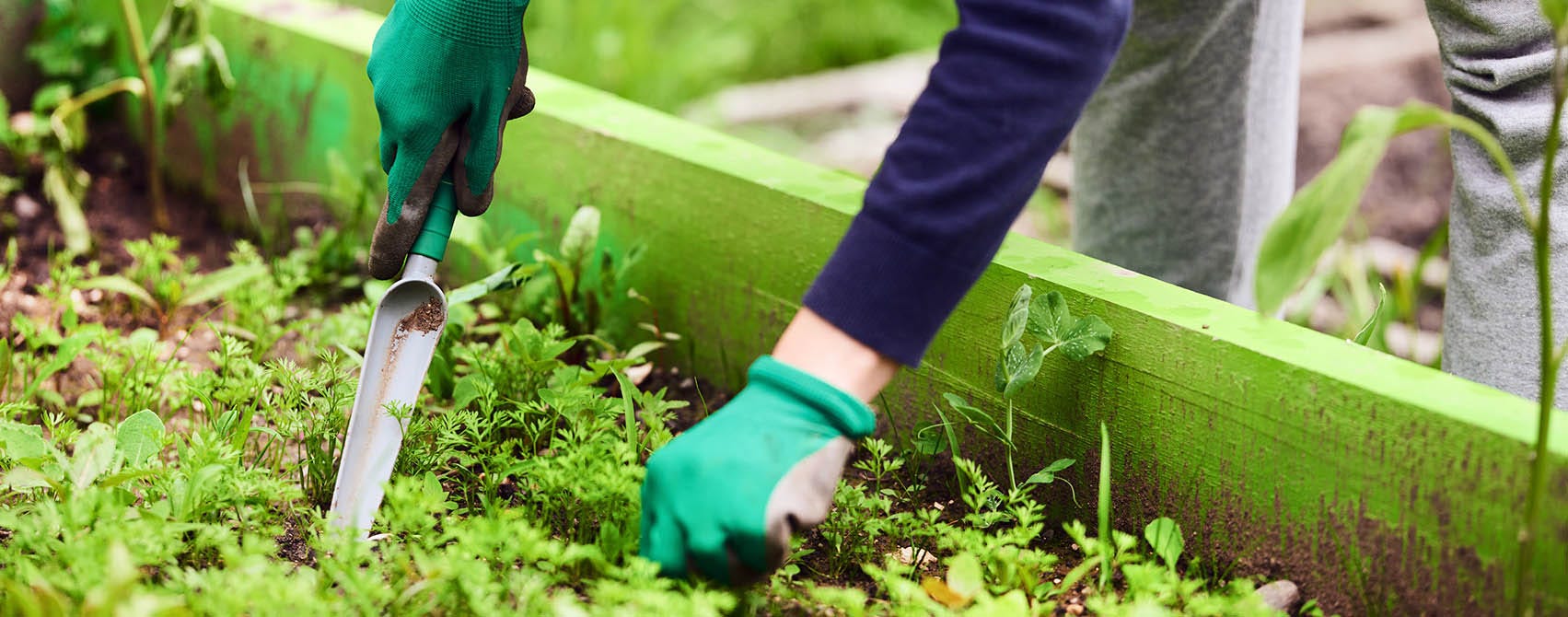
Weeds are resilient plants and should be treated as such when preparing to prevent and rid them from your garden. Take the dandelion as an example. One dandelion can produce up to 15,000 seeds. Each of those seeds can survive in the soil for up to six years. If they are allowed to grow uncontrolled, each of those 15,000 seeds can produce 15,000 more.
Before you run screaming inside and decide to give up on your garden, know there are many simple actions you can take to prevent your garden from being overrun. Keep reading to learn as much as possible about these annoying plants and what you can do to take back control.
What are Weeds?
Any plant can be considered a weed. Grass is seen as a weed when it starts growing in your mulched garden. Those flowers you planted last spring? You would most likely transplant or dig them up if a few suddenly appeared mysteriously in your lawn. By definition, a weed is any plant that grows in an undesirable location.
Weeds can be classified into three groups based loosely on their appearance, broadleaf, grassy, and sedge. Broadleaf weeds have wide leaves and their veins branch out in many different directions. The most common species of broadleaf weeds are dandelions, clover, and chickweed.
Grassy weeds received their name due to their strong resemblance to grass. As they grow, they first appear as a single leaf and grow rapidly from there. They also possess hollow, round stems. Common grassy weed species include crabgrass, bermudagrass, and annual bluegrass.
Sedge weeds are also referred to as grass-like weeds since they also resemble grass. They possess narrow, triangular shaped leaves that are arranged in groups of three. Wild onions, kyllinga, and nutsedge are the most common weed species in this group.
How do Weeds Spread?

Some weeds travel more extensively than others. We all remember blowing dandelion seeds and making wishes as kids while our parents inwardly cringed thinking about the results this seed spreading activity would cause for their gardens. Each seed species has its own unique way of spreading and finding the best growing conditions. Some rely on animals to brush against them and transport them, others rely on a breeze and some seeds even make their way into your lawn in soil you buy at the store.
Seeds can remain dormant in the soil for years just waiting for the perfect conditions to fuel their germination. This makes them particularly difficult to catch when starting a new garden. To keep your garden weed free from the start, try applying a weed prevention in the early spring to block any rogue weed seeds from growing.
Weed Classifications
Just like any other garden plant, weeds fall into three different categories, perennials, annuals, and biennials. Knowing which type of weed you are dealing with will help you determine the best way to get rid of them for good.
Perennials
Perennials are by far the most common type of weed found in most gardens. If you’ve ever battled a dandelion, you have encountered a perennial. Perennials are so difficult to get rid of because they return year after year from their roots. Their roots are so extensive because they store food underground to help them survive the winter.
The best method to combat these weeds is by hand pulling or using herbicides. To completely get rid of this type of weed, you must remove the entire root system from your garden. Keeping your garden plants healthy also helps to naturally control weeds.
Annuals
Annuals, like crabgrass, are the second most common classification of weeds. Annuals grow from seeds to full flower in one growing season and are difficult to eliminate due to their rapid growth and subsequent spread of seeds. After they have spread their seeds, they die and grow again the next year from the seeds they dispersed.
Most annuals start to germinate when a garden is tilled for planting. Be careful about applying herbicides in soil with desirable plant seeds as they will prevent them from growing. If your garden is established, add mulch or bark/wood chips to completely cover and smother any weeds by blocking their access to sunlight. Hand pulling is also very effective.
Biennials
Biennials are the least common classification of weeds, but are still a problem for many gardeners. These weeds, like Queen Anne’s lace or mullein, live for two years. Biennials spend their first year growing from a seed and undergo partial development. They do not flower or spread seeds until their second and last year of life. Since this type of weed spreads by dispersing their seeds, it is crucial to eliminate them in their first year of life.
Biennials must also have their root systems completely removed to prevent them from repeatedly returning. This type of weed is best eliminated by hand pulling, herbicides, and the use of mulch to block sunlight.
Conditions Weeds Love
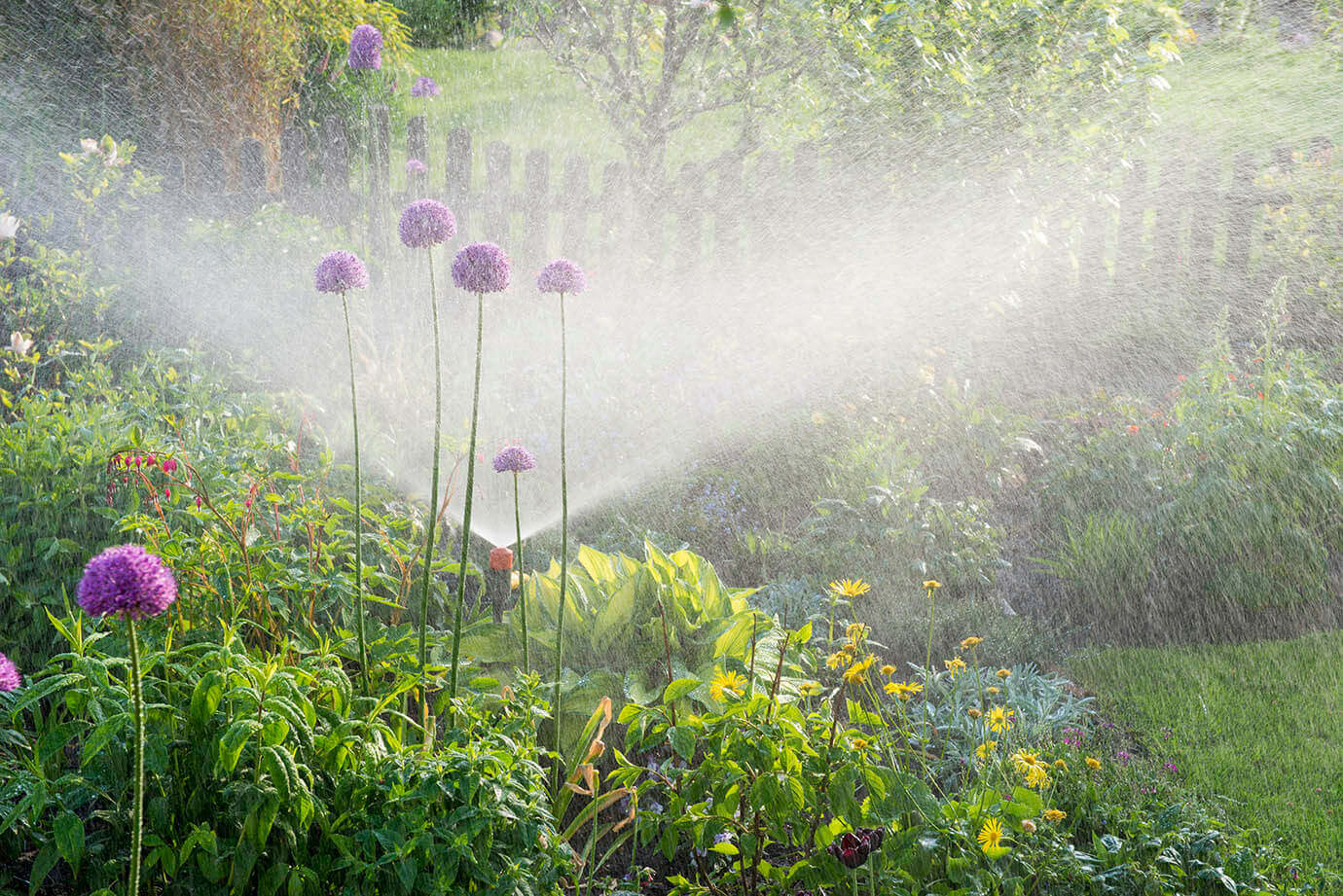
Weeds need very specific conditions to thrive. An abundance of nitrogen, sunlight and a soil temperature above 55° F are the ideal conditions for weeds to start growing. In the spring, there is generally a short window, about ten days, of time where seeds experience the perfect growing conditions. Make sure to avoid the following conditions weeds love to avoid a garden full of weeds instead of the flowers you painstakingly planted.
- Frequent Watering – Watering your garden frequently can actually encourage weed growth, especially since some weeds, like ivy, prefer damp conditions. To encourage strong root systems in your plants, water your plants 0.5–1 inch every other week if it hasn’t rained.
- Improper Fertilization – The battle against weeds is won with impeccable timing. If you fertilize your lawn during the period when weeds are germinating, you may be fertilizing your weeds as well as your garden.
- Compacted Soil – Garden plants prefer spongy soil and do not grow well in highly compacted soil since their roots need to exert extra effort to expand their root systems. Some weeds, however, have no preference. Lightly till your garden area before planting to decrease the compaction.
- Insect Damage – The more damage your garden plants have sustained, the less strength they have to fight off weeds. Insect damage can cause destruction to leaves and roots, making it harder for plants to grow or fight disease. Weeds will take advantage of this weakness to move in and steal nutrients from the soil. Apply a pesticide, like Neem Oil, that is safe for use in organic gardening.
- Disease – Weeds love unhealthy plants. Plants fighting off disease may need extra nutrients to fuel their recovery and fight infection. If too many weeds are taking the nutrients away from them they might not survive. Using a fungicide that is safe for your garden and free of harmful chemicals is a great way to protect your garden plants from harmful fungi and diseases.
- Poor Drainage – Overly damp soil is inviting for many types of weeds. These same conditions can cause root rot in your garden plants which could leave more space for weeds to take over if your desirable plants die. Landscape or till lightly to aerate the soil in and around your garden to improve the drainage.
How to Control & Prevent Weeds
Weeds are one of the few unfortunate aspects of growing your own garden. Try not to get upset each time a weed appears by learning more about how you can control and ultimately stop them. A healthy and well-maintained garden is the key to overcoming weed troubles. Promote the health of not only your garden but your lawn and this will act as a natural weed repellent. There are several options for effectively controlling and eliminating weeds available. Some require more effort while others are more expensive. Whichever method you pick, arm yourself with the knowledge to choose the best option for your garden and the surrounding environment.
Every gardener’s goal is to produce the best possible garden with the plants they have chosen. By approaching gardening and weed control in an environmentally friendly way, you can create a healthier garden that requires less maintenance down the road for you and your family. Avoid chemically laden or synthetic products that are not deemed safe for organic use. This will prevent any damaging substances from entering your garden or from being absorbed in water resources or food supplies.
How to Remove Weeds by Hand
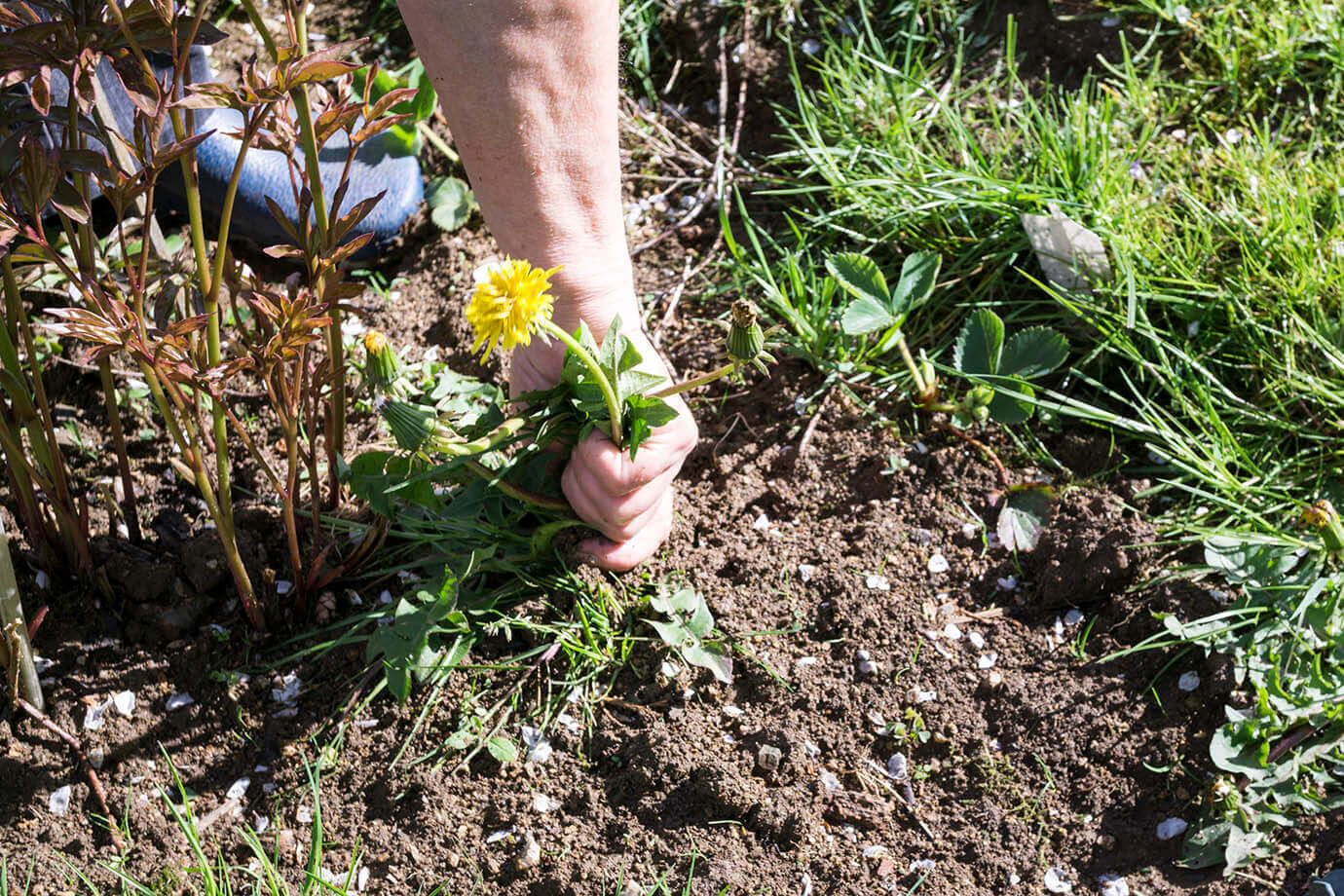
The most environmentally friendly weed removal option available is hand pulling. It is tedious and does require some work but it does not use any chemicals and is 100% safe for your plants. Wait to pull weeds until after a moderate rainfall. This will leave the soil moist and roots can be removed more easily. Try to remove weeds from your garden before they begin to seed. The shaking and pulling motions might cause the seeds to spread and increase your weed problem.
To start, grab as much of the weed as you can as close as possible to the base and soil level. The weed is the strongest at this area, and it will be easier for you to pull the entire plant out. For large or particularly stubborn weeds, use a trowel or garden fork to loosen the soil enough to pull the weed out. Check the soil where the weed was to make sure you removed all of its roots and then fill in the hole with fresh soil or mulch.
How to Prevent Weeds from Growing
The best tool in your weed fighting repertoire is prevention. The more you do to prevent any weeds from getting established, the better prepared your garden will be, which means less work for you! For the best results, utilize more than one prevention method. One might be more effective against one type of weed and less so against others. Pull out all of the stops to get rid of your weeds faster. Follow these tips to prevent and eliminate weeds in your garden.
- Cover Them Up – Use mulch, bark chips, or wood chips to cover weeds completely in your garden. This will prevent weeds from getting sunlight which will stop them from growing.
- Create A Barrier – Use a raised garden or block off your garden from the rest of your lawn to prevent grass or weeds from spreading into your garden area. This won’t stop airborne seeds but it will keep your garden tidy and make it harder for intruding plants to invade.
- Spread Cornmeal – Cornmeal is a natural byproduct of the corn milling process and studies have shown it to be an effective herbicide when used as directed. While cornmeal is effective against seeds, it does not damage the plants after the seed stage. For this product to be effective, apply in the spring before weed seeds have sprouted. Cornmeal will also prevent desirable plant seeds from sprouting so make sure to plant 8 weeks after you apply this to your garden.
- Apply Weed Prevention Plus – This product contains active bacteria that eat up the available nitrogen in the soil which weeds use to grow quickly. After two weeks, the bacteria die and the nitrogen is released back into the soil where plants can use it to grow.
- Keep Weeds Out of Compost Piles – If there is any possibility that the weeds you pulled could have seeds, do not put them into your compost pile or anywhere else where they could grow. The seeds could potentially germinate or be spread wherever you move your compost.
Everything You Need To Know About Herbicides
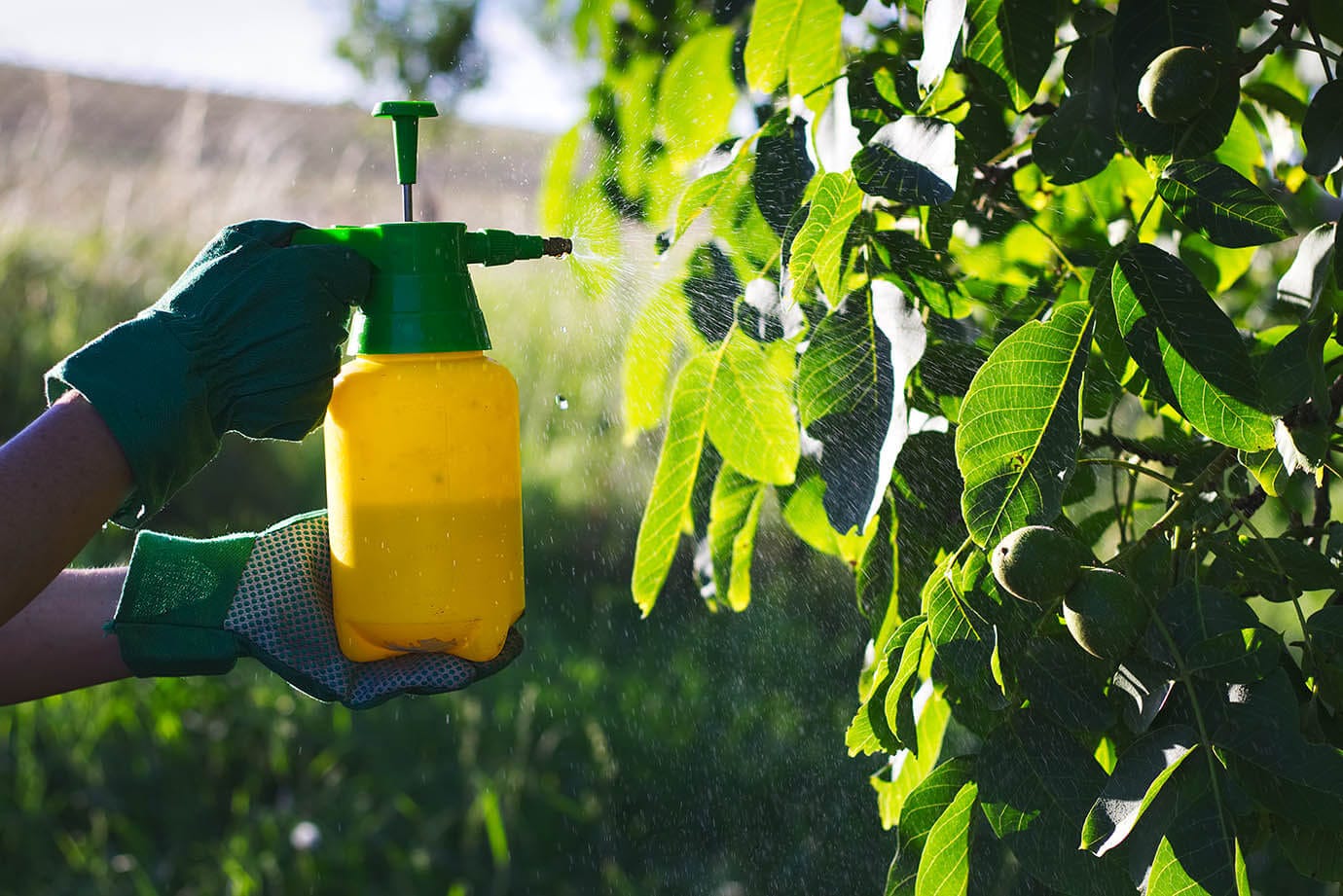
Weed killers or herbicides are substances, often in liquid or granular form, that are toxic to plants. Their purpose is to rid an area where they are applied of undesirable vegetation. Herbicides can be broken down into many categories such as organic or chemical/synthetic, contact or systemic, selective or nonselective, and pre- or post-emergent.
Herbicides are best used for larger yards or severe infestations of weeds have occurred and hand pulling is not a feasible option. Below is a breakdown of the different types and categories of herbicides to help you make an informed decision about which kind is the best fit for your garden.
Chemical or Organic Herbicides
As with most garden care products, herbicides come in both chemical/synthetic or organic options. Chemical herbicides have been shown to cause damage to the environment and can cause pollution when its chemical runoff makes its way into waterways. Chemical herbicides can also cause harm to the soil in which your plants grow by eliminating soil microbes that stimulate plant growth and health. These can also make certain vegetables and fruits inedible if sprayed.
OMRI Listed® organic herbicides or herbicides that are deemed safe for use in organic gardening are beneficial to your garden. These herbicides are made with natural ingredients that will not harm the environment when used as directed. Often, their ingredients will break down and these natural components will promote soil health.
Systemic or Contact Herbicides
Systemic herbicides eliminate weeds from the inside out. They enter a plant through its leaves or roots and then travel throughout the plant, causing failure of the plants’ essential systems as it goes.
Contact herbicides attack from the outside. Typically they are sprayed on leaves or any part of the plant that lives above ground and attack the plant by preventing it from photosynthesizing. This type of herbicide does not work on seeds.
Selective or Nonselective Herbicides
Selective herbicides are formulated to only target certain plant species. While these are effective at eliminating certain weeds, you must be knowledgeable about the species you find in your yard to buy one that will work. Be sure to check the labels on selective herbicides as they will list every plant species they can eliminate. This type of herbicide will not damage an established, healthy garden but it may harm seedlings or new plantings.
Nonselective herbicides will kill any plant they come in contact with regardless of their species. Be careful to only spray undesirable plants since this type of herbicide can easily decimate your well cared for garden. As a general rule, do not spray nonselective herbicides on a windy day or if you are expecting rain. Droplets could easily be carried to desirable plants and harm the plants you do want in your garden!
Pre- or Post-Emergent Herbicides
This final type of herbicide targets plants in different life stages. Pre-emergent herbicides work to eliminate weeds before they start to germinate. They target seeds and will not have any significant effect on existing weeds that have already grown. This kind of herbicide must be applied before the germination period begins to be effective.
Typically weed seed germination begins when soil temperatures reach 55° F so you must apply the herbicide before this occurs. Pre-emergent herbicides are so effective because they create a barrier between the seed and the nutrients it needs for 6-8 weeks. After this time, the barrier breaks down and the seeds will no longer be a threat.
Post-emergent herbicides are not an effective defense against weed seeds. This type is formulated to attack weeds in the later stages of their life cycles. This herbicide works best if you apply it later in the season after weeds have already emerged from the soil. Make sure to apply this herbicide before weeds start to produce seeds. Otherwise, some seeds might find their way into your garden to sprout during the next growing season.
Weed Control Schedule
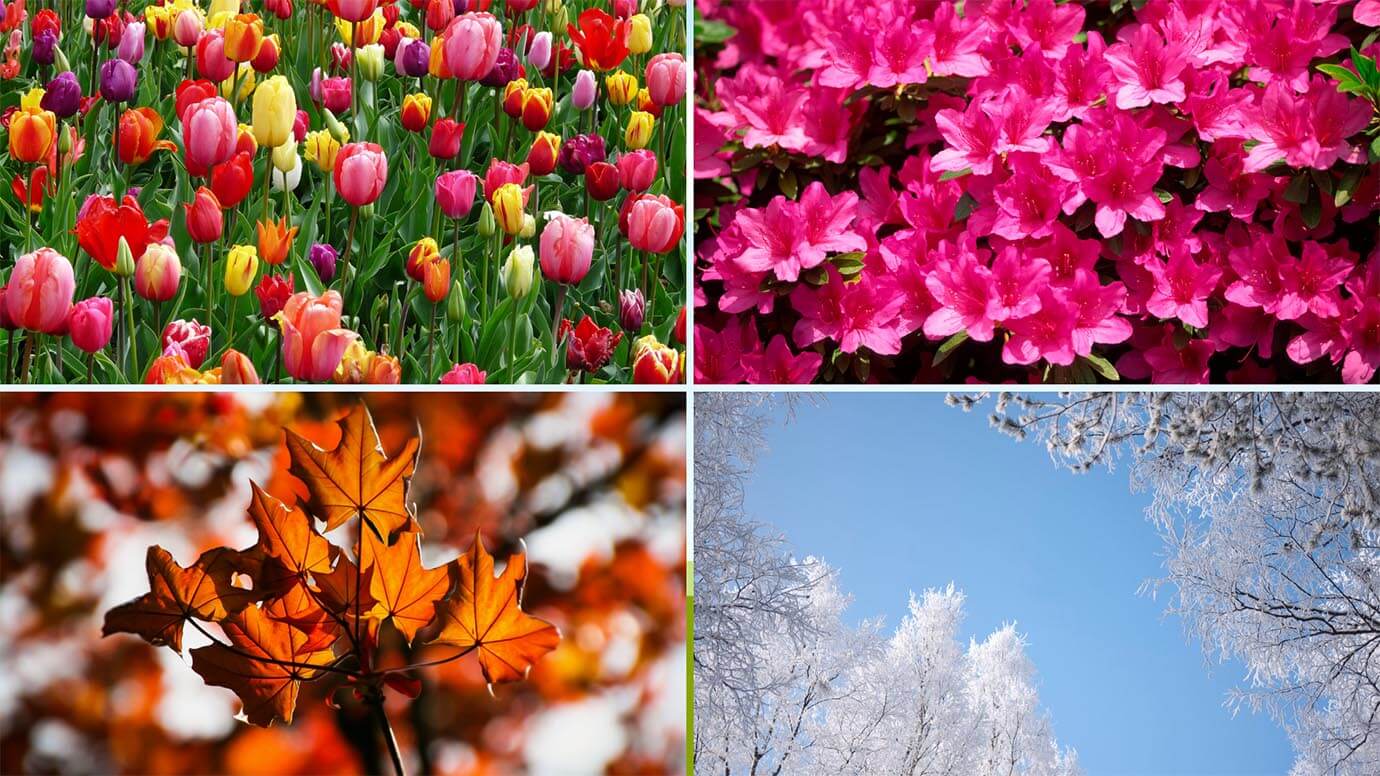
Keeping your garden free of weeds is all about timing. Whenever possible, remove weeds before they start to flower to prevent future generations from sprouting. It can be difficult to determine the best time to apply herbicides to get rid of and prevent weeds. For the best results, use herbicides three times a year as follows.
- Early spring – Check your garden every few weeks for new weeds and hand pull as necessary. This is the time of year to really concentrate on getting rid of existing weeds before they sprout. Apply pre-emergent herbicides as the soil warms to prevent seeds from sprouting.
- Late sprin – This time of year marks the middle of the growing season. Inspect your garden again and determine which weeds have grown back or appeared. Identify the type of weed you have and choose the best type of herbicide to battle those species. Hand pull any weeds that are young and easy to reach.
- Fall – Preparing your garden for winter can be very simple. After you have harvested any fruits or vegetables and your plants have finished flowering, pull any remaining weeds from your garden beds. Apply a pre-emergent to kill any seeds that may have found their way into your soil.
Tips
Keeping your garden weed free doesn’t have to be a complicated undertaking. Now that you know a lot more about weeds and how to best control and eliminate them, follow these tips to enhance your skills and rid your garden of weeds for good.
- Mark Your Containers – To keep your herbicides organized and to prevent containers being reused for food products, designate specific containers, like a spray bottle, that will only be used for herbicides. Mark it clearly so it will not be mistaken for something else.
- Read All Labels – Every herbicide label will tell you what kind of herbicide it is, whether it is OMRI certified, and which weeds it can be used against. Make sure to follow all instructions on the bag closely.
- No Mowing or Pruning Before Product Application – The more surface area herbicides have available on a weed, the more effective they will be. Weeds with very short leaves make it harder for herbicides to be effective because less product can be applied. Wait a day or two after you have applied to herbicide for it to fully sink in, then you can give your garden it’s much needed maintenance!
- Focus On Actively Growing Plants – Apply herbicides to younger weeds. Younger plants are not as physically strong so an herbicide can stop them in their tracks before they can produce and spread seeds. The older a plant gets, the more resistant and strong it will become. It is always better to eliminate weeds when they are weaker.
- Create a Healthy Garden – A healthy garden is the best natural defense you can provide against weeds. Plants that have access to rich nutrients, are free from disease, and are not battling insect infestations are more well equipped to keep the soil nutrients for themselves instead of allowing weeds to have them.
- Keep It Simple – If you are trying to cover a large area with herbicides, use a hose-end attachment for easy spraying. If your herbicide is in granular form, use a wheeled spreader to make things easier.
- Spot Treat As Needed – Some weeds might sneak by your careful inspection and applications of herbicide. Keep a close eye on your lawn in case some dormant or rogue seeds begin to sprout. If you notice any weeds that you do not want to hand pull or can’t easily reach, apply a small amount of herbicide to the weed to eliminate it.
- Avoid Windy Days – Applying herbicides on windy or rainy days can cause them to drip or run into areas where you have plants you want to nourish instead of kill. To keep your garden safe, apply only on dry, non-windy days.
- Discard Responsibly – Discard weeds and clippings in an area where they will not be able to sprout. Adding weeds to a compost pile can help them spread to any area you transfer your compost and can create the perfect conditions for them to germinate.

